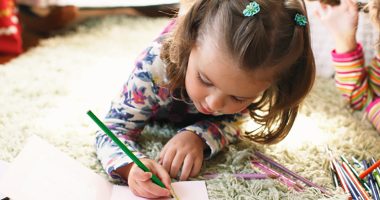
This post first appeared on Right About Money.
Boomers are rapidly becoming Grandboomers; in the U.S., they are 70 million strong. Might this legion of potential mentors hold the key to financial literacy for the next generation?
I’m counting on it. All we need to do is show them how to have the conversation.
Grandparents have joked for years that if they knew grandkids were going to be so much fun they would have had them first. They also confide in large numbers that they would like to do a better job with their grandchildren than they did with their own kids—at least when it comes to teaching them about money.
Empowering retiring boomers to engage in all sorts of productive activities in this era of longevity is rapidly becoming a policy goal around the globe. Why not enlist them on the financial literacy front? Grandparents with access to tools to teach a grandchild about wants and needs and smart spending could be one of the most powerful initiatives in the financial literacy movement.
A quarter of grandparents have spent more than $1,000 on their grandkids in the past 12 months, according to an AARP survey. These elders are eager to share their life experiences—how they made a living, their money mistakes and struggles, the value they place on giving back. Grandchildren are eager to listen.
My Money Savvy Pig piggybank is one tool that grandparents tell me they use to get the conversation started about the choices grands have for money – in a concrete way. The Money Savvy Pig is a translucent four-chambered piggybank with four slots and four tummies, each for a money choice: save, spend, donate or invest. Other tools like FamZoo.com, an online account option, will help teach the same lessons to older children. All are a great way for a grandparent to start the conversation.
I grew up with my grandmother, who lived upstairs in our two-flat apartment. Every weekend my grandmother would cook the midday meal, and we would all gather around her table. And I would listen to the adult conversations around me. Many of them were about money. Grandma Katie told us about The Depression. How homes in our own neighborhood were selling for less than $10,000 each, and how she managed to save money no matter what she was paid. Essentially, she showed me how to “pay myself first” and save.
Her money lessons never left me. She gave money weekly to the church. She washed out plastic bread bags for reuse. She saved change and gave me small bags of dimes and quarters when I would visit home after having moved away.
It sounds quaint, I know. Young people today barely know what cash is. So, become familiar with apps like Venmo, Paypal and Square. You can do the same thing electronically – but consider starting with cold hard cash. The occasional bag of change from my grandmother was for me an enduring lesson in frugality and the power of persistent saving. I saw nickels and dimes turn into quarters and dollars. Honestly, it changed my life. I’ve been a saver for as long as I can recall.
Grandparents are a powerful tool we need to activate in our fight for a financially literate next generation. They are the unconditional voice of love that children will hear in a different way than if the words come from parents. Ask an elder you are close to if they will participate in the financial education of your children. I guarantee the kids will be willing.





Leave a Comment